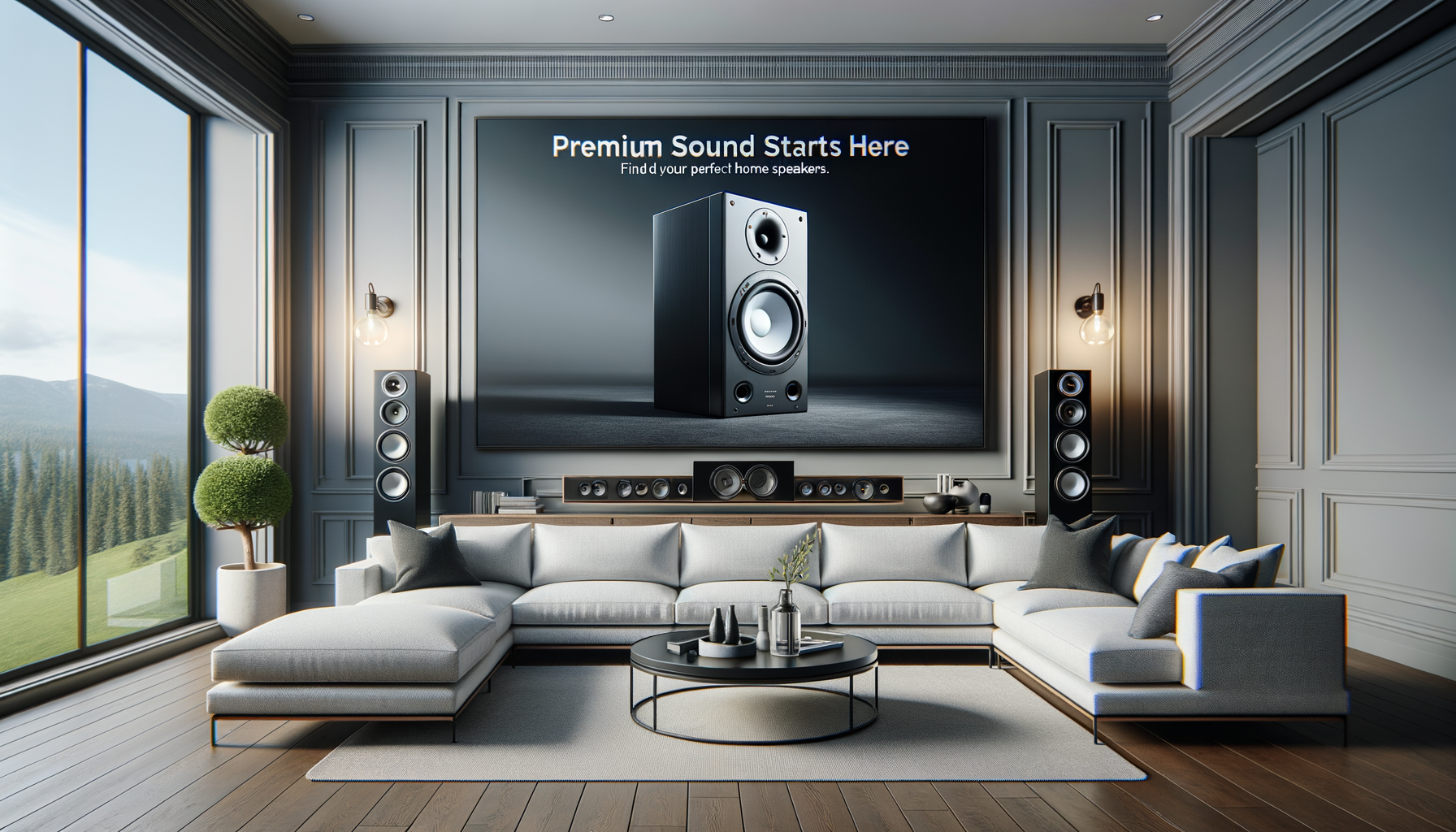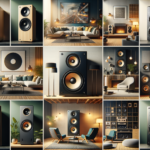The Evolution of Speakers: From Basic Sound to Immersive Experiences
Speakers have come a long way since their inception, evolving from simple devices that merely amplified sound to sophisticated systems that deliver immersive audio experiences. Initially, speakers were basic, mono-channel devices that served the sole purpose of amplifying sound. However, technological advancements have transformed them into complex systems capable of delivering stereo and surround sound, enhancing the listener’s experience significantly.
In the early days, speakers were large and cumbersome, primarily used in cinemas and public address systems. With the advent of consumer electronics, speakers became more compact and affordable, making them accessible to the average household. The introduction of stereo sound in the 1950s marked a significant milestone, allowing listeners to enjoy a more realistic audio experience by replicating the way humans naturally hear sound.
Today, speakers are not just about sound; they are about creating an experience. The integration of smart technology has further revolutionized the speaker industry. Modern speakers can connect to the internet, stream music from online platforms, and even respond to voice commands. This evolution has made speakers an integral part of smart homes, providing convenience and enhancing the overall entertainment experience.
Moreover, the development of wireless technology has eliminated the need for cumbersome cables, allowing for greater flexibility in speaker placement. This, combined with advancements in sound quality and design, has made speakers not just functional devices but also aesthetic additions to home decor.
Understanding Speaker Types: Finding the Right Fit for Your Needs
When it comes to choosing speakers, understanding the different types available is crucial to finding the right fit for your needs. The market offers a wide variety of speakers, each designed for specific purposes and environments. Here, we explore some of the most common types to help you make an informed decision.
Bookshelf Speakers: These are compact speakers ideal for small to medium-sized rooms. Despite their size, they deliver excellent sound quality and are perfect for music and home theater systems. They can be placed on shelves or stands, making them a versatile choice for various setups.
Floorstanding Speakers: Known for their powerful sound output, floorstanding speakers are larger and designed to deliver a full-range audio experience. They are suitable for larger rooms and are often used in home theater systems to provide immersive sound.
Soundbars: Soundbars are sleek, all-in-one speaker systems that are perfect for enhancing TV audio. They are space-saving and easy to install, making them a popular choice for those who want to improve their home entertainment setup without the clutter of multiple speakers.
Portable Speakers: These are compact, battery-powered speakers that are easy to carry around. They are perfect for outdoor activities or for use in different rooms of the house. Many portable speakers are also waterproof, making them suitable for poolside or beach use.
Choosing the right speaker depends on your specific needs, such as the size of your room, your budget, and your intended use. By understanding the different types available, you can select a speaker that not only meets your audio requirements but also fits seamlessly into your lifestyle.
Key Features to Consider When Buying Speakers
Selecting the right speakers involves more than just choosing a type; it’s about understanding the key features that can significantly impact your overall audio experience. Here are some essential features to consider when buying speakers:
Sound Quality: This is arguably the most important factor. Look for speakers with a wide frequency range, as they can reproduce a broader spectrum of sounds, from deep bass to high treble. Reading reviews and listening to demos can help you gauge sound quality.
Connectivity Options: Modern speakers offer various connectivity options, including Bluetooth, Wi-Fi, and wired connections. Consider your preferred method of connection and ensure the speakers you choose support it.
Power and Sensitivity: The power rating of a speaker, measured in watts, indicates how loud it can get. Sensitivity, measured in decibels, indicates how effectively it converts power into sound. Higher sensitivity speakers require less power to produce high volumes.
Design and Build Quality: The design of a speaker affects not only its aesthetic appeal but also its durability. Look for speakers with sturdy construction and materials that complement your home decor.
Additional Features: Some speakers come with extra features like voice assistant integration, multi-room audio capabilities, and equalizer settings. These can enhance your listening experience and provide added convenience.
By considering these features, you can find speakers that offer exceptional performance and meet your specific needs, ensuring a satisfying audio experience for years to come.
The Role of Acoustics in Speaker Performance
Acoustics play a crucial role in how speakers perform and how sound is perceived in a given space. Understanding the relationship between acoustics and speaker performance can help you optimize your audio setup for the best possible sound quality.
Every room has unique acoustic properties that affect how sound waves travel and interact with surfaces. Factors such as room size, shape, and the materials used in walls, floors, and ceilings can influence sound quality. For instance, hard surfaces like tile or glass can cause sound to reflect, leading to an echo, while soft materials like carpets and curtains can absorb sound, reducing echo and creating a more balanced listening environment.
Speaker placement is also critical in achieving optimal acoustics. Placing speakers too close to walls can cause bass frequencies to become overly pronounced, while positioning them too far apart can create gaps in the soundstage. Experimenting with different placements can help you find the sweet spot where sound is clear and balanced.
Additionally, using acoustic treatments such as diffusers and absorbers can help manage sound reflections and improve overall audio quality. Diffusers scatter sound waves, reducing echo, while absorbers trap sound waves, minimizing unwanted reflections.
Understanding and optimizing the acoustics of your listening space can significantly enhance your speaker’s performance, allowing you to enjoy music, movies, and more with clarity and depth.
Future Trends in Speaker Technology
The speaker industry is constantly evolving, with new technologies and trends shaping the future of audio experiences. As we look ahead, several exciting developments are set to redefine how we interact with sound.
Smart Speakers: The integration of artificial intelligence and voice assistants into speakers is becoming increasingly common. These smart speakers can perform a variety of tasks, from controlling smart home devices to providing news updates, all through voice commands.
3D Audio and Spatial Sound: Advances in 3D audio technology are creating more immersive listening experiences by simulating a three-dimensional sound environment. This technology is particularly beneficial for virtual reality applications and gaming, where spatial awareness is crucial.
Eco-Friendly Designs: With growing environmental awareness, manufacturers are focusing on sustainable materials and energy-efficient designs. This trend not only reduces the environmental impact but also appeals to eco-conscious consumers.
Wireless and Portable Solutions: The demand for wireless and portable speakers continues to rise, with improvements in battery life and connectivity options making them more versatile and convenient for users on the go.
As these trends continue to develop, the future of speakers promises enhanced functionality, improved sound quality, and greater integration into our daily lives. Staying informed about these trends can help you make future-proof purchasing decisions and enjoy cutting-edge audio experiences.








